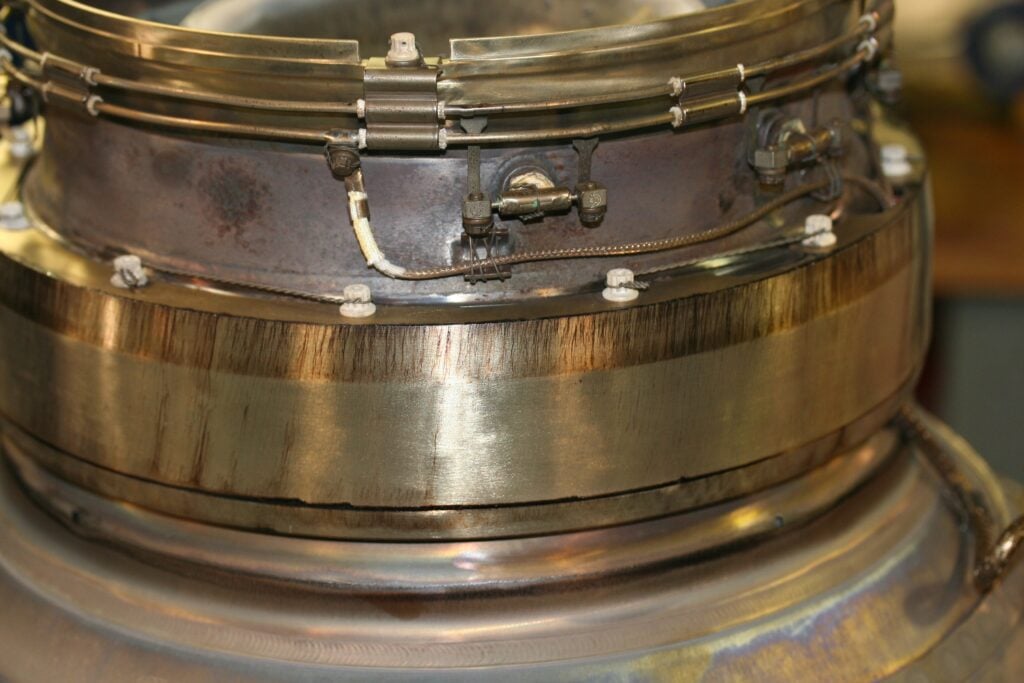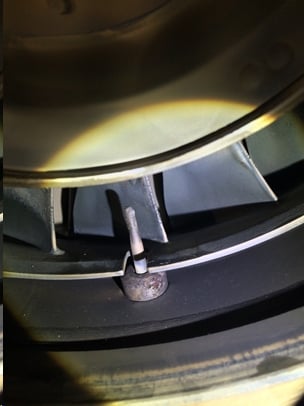ITT is Internal Turbine Temperature. This is the system that provides the indication to the pilot of the operating temperature of the engine. So, what is the ITT system?
The PT6 has several stations throughout. Various things are measured at these stations. You may be familiar with P3 air. The interpretation of that is air pressure at station three. The ITT system is the same way. You may have heard me or others refer to it as T5. Yes, you guessed it, ITT is measuring the temperature at station five. Station five is located right between the compressor turbine and the power turbine. That is the temperature that we are wanting to measure.
The T5 system consists of thermocouples, either 8 or 10, that extend into the airstream between the turbines. The thermocouples are connected in parallel with a bus-bar. A wiring harness is connected to the bus-bar and then comes to the outside of the engine. Before the signal goes to the gage there is also a probe attached in parallel commonly known as the trim stick. The trim stick adjusts the reading in the cockpit a prescribed amount. This amount is determined on the test cell run of the engine where a formula, that includes the temperatures of the inlet and exhaust, are used to determine trim value. The trim stick provides a specific bias to the indication to compensate for any sampling errors. This is critical to make sure that the internal critical component’s temperatures are within the acceptable range. The trim stick is something that cannot be adjusted or changed in the field without consultation from Pratt & Whitney Canada engineering. It can be replaced with the same class if found to be faulty.

The thermocouples consist of alumel and chromel portions. The two different metals are joined together and when they get hot they send an electrical signal. This is the signal that goes to the gauge the pilot is reading. If you need to identify the difference between the alumel and chromel sides of the wire harness, they are different sizes. The alumel connections are bigger, I always remember them as BIG AL, and now you will too.
Why am I bringing all of this up? I have received some calls recently regarding intermittent or fluctuating ITT readings. There are testing instructions for the whole system in the maintenance manual. You can test it as a complete unit. You can also split the engine at the C-flange and test the individual components. When I am advising people on the process I always start with a check of the ITT gauge. Remember to set your test equipment with consideration of the lead between the engine and the gauge. You can then induce an electrical signal with your tester and compare the reading to the reading in the cockpit.

Once the gauge is determined to be good or replaced, we test the engine components. We test for resistance and for continuity. The issue then becomes, how do we trace an intermittent problem? Most of the time what I have found is that there is a “disconnect” somewhere in the system. This can be chaffing on the ITT wire harness or a broken leg on the bus-bar, I have even found a broken bolt before. Sometimes there is insulation that becomes brittle over time and can allow a short in the system. These can only thoroughly be checked by splitting the engine. At times, you might have to “wiggle” the components to find the issue. Once the issue is found it can easily be handled by component repair or replacement.
A couple of extras. Humidity can cause erroneous readings. Be sure to follow the manuals when dealing with ITT components as sometimes it will have you heat them for both checking and removing moisture. Lastly, handle the complete system with care. When reinstalling the power section take care that the wire harness is tucked away as much as possible. Don’t bang the bus-bar as the engine halves go together.

Intermittent problems can be the worst when it comes to troubleshooting. If you take a step by step approach with some information and assistance you can almost always find the problem, almost. As always, reference the manuals and ask for help. We are all in this together.
Robert Craymer has worked on PT6A engine and PT6A powered aircraft for the past three decades, including the last 25+ years at Covington Aircraft. As a licensed A&P mechanic, Robert has held every job in an engine overhaul shop as well as being an instructor of PT6A Maintenance and Familiarization courses for both pilots and mechanics. Robert has been elected to the NAAA board as the Allied-Propulsion Board Member. Robert can be reached at robertc@covingtonaircraft.com or 662-910-9899. Visit us at covingtonaircraft.com.






